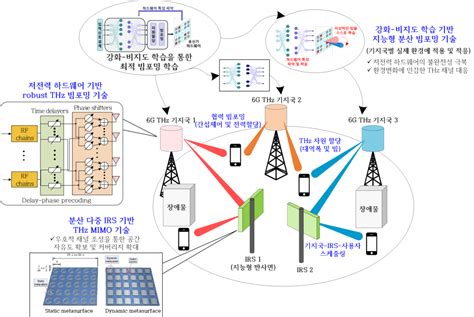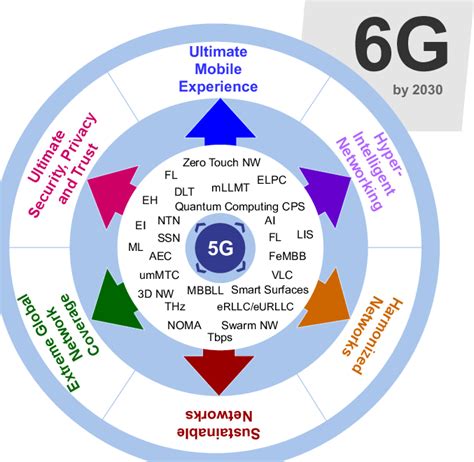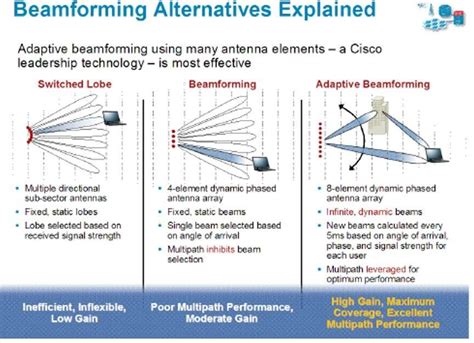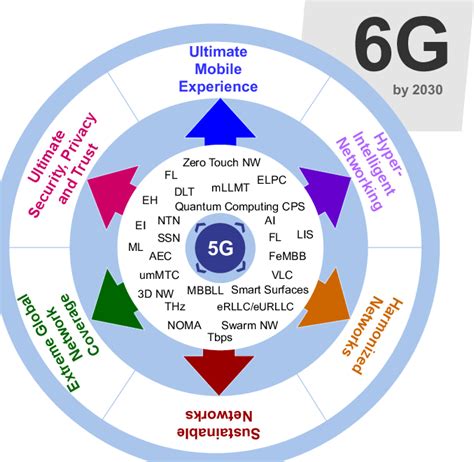Breaking News


Popular News


Learn the latest in 6G technology and its impact on performance. Explore beamforming and advanced techniques to overcome challenges.In today’s rapidly evolving digital landscape, the development of 6G technology has become a topic of great interest and speculation. As the demand for faster, more reliable wireless communication continues to grow, the need for advanced beamforming techniques to enhance 6G performance has never been more pressing. In this blog post, we will delve into the intricacies of 6G technology, the challenges it faces, and the crucial role that beamforming plays in optimizing its performance. From understanding the basics of 6G technology to exploring the potential impact of advanced beamforming techniques, we will provide insight into the future of wireless communication and the innovative methods being developed to improve its efficiency. Join us as we explore the fascinating world of 6G technology and the ways in which advanced beamforming techniques are shaping its future.
Contents

6G technology is the next generation of wireless communication, following in the footsteps of 5G. It is expected to bring significant advancements in terms of speed, capacity, and efficiency, revolutionizing the way we connect and communicate. With 6G, we can expect data transfer speeds of up to 1 terabit per second, enabling ultra-high definition video streaming, virtual reality applications, and seamless connectivity for the Internet of Things (IoT).
One of the key features of 6G technology is its ability to operate in the terahertz frequency bands, which offer significantly higher bandwidth compared to the gigahertz bands used in 5G. This will enable the transmission of massive amounts of data at unprecedented speeds, paving the way for new and innovative applications that were previously not feasible with current technologies.
Furthermore, 6G technology is also expected to leverage advanced beamforming techniques to optimize signal transmission and reception. By using intelligent algorithms to manipulate antenna arrays, beamforming allows for the focusing of signal energy in specific directions, enabling more efficient communication with higher data rates and improved coverage. These advanced beamforming techniques will play a crucial role in enhancing the performance of 6G networks, ensuring reliable and high-speed connectivity for a wide range of use cases.

6G technology is the next generation of wireless communication that is expected to revolutionize the way we connect and interact with the world. However, with the promise of faster speeds and lower latency comes a host of challenges that need to be addressed in order to achieve optimal performance.
One of the main challenges in 6G performance is the ability to handle massive amounts of data. With the proliferation of connected devices and the increasing demand for high-definition streaming, 6G networks will need to be able to handle an unprecedented amount of data traffic. This will require advanced technologies and infrastructure to support the massive throughput and capacity requirements of 6G networks.
Another challenge in 6G performance is the need for reliable and stable connectivity, especially in dense urban environments. The deployment of small cells and mmWave technology may help to improve coverage and capacity in urban areas, but it also brings challenges in terms of interference and signal propagation. Advanced beamforming techniques will be essential in overcoming these challenges and ensuring consistent and reliable connectivity in 6G networks.

Introduction to beamforming
Introduction to beamforming
Beamforming is a signal processing technique used in wireless communication to improve the signal strength and quality of transmission. It is a method of focusing a wireless signal towards a specific direction, rather than broadcasting in all directions. This can improve the efficiency of transmission and reception, especially in high-frequency bands such as those used in 6G technology.
One common type of beamforming is known as digital beamforming, where signal processing algorithms are used to steer the antenna pattern in the desired direction. Another type is analog beamforming, which uses phase shifters to adjust the signal’s phase and amplitude to create a focused beam. Both techniques have their own advantages and applications in different scenarios.
One of the key benefits of beamforming in 6G technology is its ability to overcome the challenges of high-frequency communication, such as increased atmospheric absorption and shorter wavelength. By focusing the signal in a specific direction, beamforming can mitigate the impact of these challenges and enhance the overall performance of 6G networks.

Beamforming is a critical technology that is expected to play a key role in the development of 6G networks. As the demand for faster and more reliable wireless communication continues to grow, 6G technology presents new challenges that require advanced beamforming techniques to overcome.
One of the most important advanced beamforming techniques is known as Massive MIMO, which stands for massive multiple-input multiple-output. This technique involves the use of a large number of antennas to create multiple transmission beams, increasing the capacity and efficiency of wireless communication systems. This enables the network to support a larger number of users and provide higher data rates.
Another advanced beamforming technique that is crucial for enhancing 6G performance is hybrid beamforming. This technique combines the benefits of both digital and analog beamforming to achieve higher signal gain and improved coverage. By using a combination of digital and analog beamforming, hybrid beamforming can effectively mitigate the interference and propagation issues that are common in wireless communication systems.
| Advanced Beamforming Techniques |
|---|
| Massive MIMO |
| Hybrid beamforming |

In the fast-paced world of technology, the introduction of 6G has generated a lot of excitement and anticipation. With the promise of faster speeds, lower latency, and more reliable connectivity, 6G is expected to revolutionize the way we communicate and interact with the world around us. However, as with any new technology, there are challenges that need to be addressed in order to ensure its success.
One of the key factors that will impact the performance of 6G is beamforming. This advanced technique allows for more efficient use of the available spectrum, enabling higher data rates and improved coverage. However, in order for beamforming to truly enhance 6G performance, it will need to be implemented in a way that maximizes its benefits while minimizing interference and complexity.
By leveraging advanced beamforming techniques such as massive MIMO and hybrid beamforming, 6G networks can achieve higher spectral efficiency, better coverage, and improved reliability. These techniques allow for more precise control of the transmission and reception of signals, leading to a more efficient use of the available resources. As a result, the impact on 6G performance can be significant, paving the way for a new era of ultra-fast and reliable communication.

What is beamforming?
Beamforming is a signal processing technique used in wireless communication systems to focus a wireless signal towards a specific receiving device, rather than transmitting the signal in all directions.
How does beamforming enhance 6G performance?
Beamforming in 6G can enhance performance by improving signal strength, reducing interference, and extending coverage, leading to faster data rates and increased capacity.
What are the advanced beamforming techniques used in 6G?
Advanced beamforming techniques in 6G include massive MIMO (Multiple-Input Multiple-Output), millimeter-wave beamforming, and intelligent reflecting surfaces (IRS) to manipulate and direct wireless signals more effectively.
Can beamforming help with energy efficiency in 6G networks?
Yes, beamforming can help improve energy efficiency in 6G networks by allowing targeted transmission, which reduces the power needed for signal transmission and reception.
Are there any drawbacks to using beamforming in 6G?
One potential drawback of beamforming in 6G is the complexity of implementing and managing multiple antennas, especially in dynamic and mobile environments. Additionally, there may be cost considerations for deploying advanced beamforming technologies.
How does 6G differ from previous generations in terms of beamforming?
6G is expected to leverage more advanced and intelligent beamforming techniques compared to previous generations, enabling higher reliability, lower latency, and increased connectivity for a wider range of devices and applications.
What are some potential applications of advanced beamforming in 6G?
Some potential applications of advanced beamforming in 6G include augmented reality/virtual reality (AR/VR), autonomous vehicles, smart cities, and the Internet of Things (IoT), where reliable and high-speed wireless connectivity is essential.